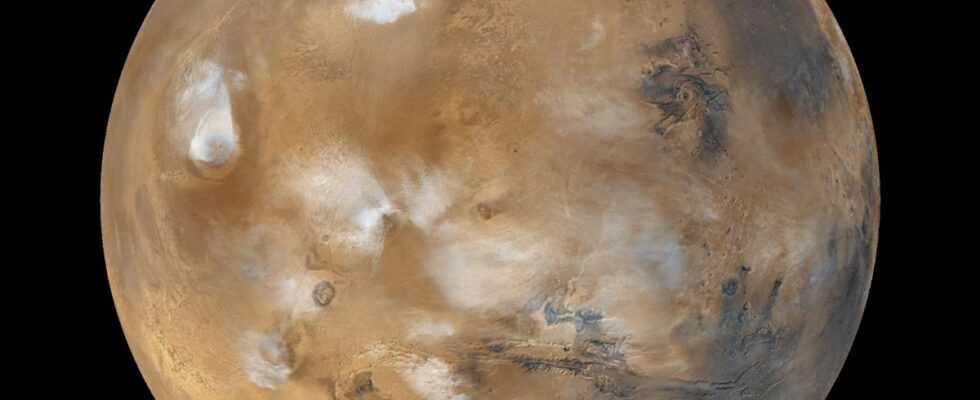Whether liquid water actually exists under the ice of Mars remains a matter of debate. Two scientific studies published in parallel come to very different conclusions. While a group led by Elisabetta Mattei of the University of Rome III thinks that the signals do indeed indicate salt water, a team led by Cyril Grima of the University of Texas has found that volcanic rocks under ice could precisely explain the data.
The studies were published almost simultaneously in scientific journals. Meanwhile, two researchers from the USA explain that liquid water flowed over Mars much later than thought. They determined that there could have been lakes there as recently as 2.3 billion years ago.

Found a lake beneath the surface?
The question of water on Mars is one of the most important of current planetary research, driven by the many probes and rovers that collect a lot of data on site. While it is fairly certain that liquid water once existed on the surface of the Red Planet, doubts have been raised about even studies on this. But at the latest after a supposedly spectacular find in 2018, the question arose as to whether there were still water deposits below the surface. Radar data collected by ESA’s Mars Express orbiter was taken as evidence of a lake around 20 kilometers wide and 1.5 kilometers below the ice at Mars’ south pole.
As Mattei’s group now writes in the Earth and Planetary Science Letters, they analyzed the properties of salt water mixed with ice at temperatures of up to minus 100 degrees Celsius. Even at such low temperatures, there can be liquid water, so the measurements were interpreted correctly. Although life as we know it from Earth could not exist there, but who knows “which way extraterrestrial life has taken”. Grima’s team comes to a different explanation for the radar data. In simulations, deep-lying volcanic rocks have produced exactly the same signals in the same locations, assuming a planet-spanning subsurface ice sheet. Then there would be no sea below the surface of Mars, all the water would be frozen, they write in the Gephysical Research Letters.
Meanwhile, Ellen Leask and Bethany Ehlmann from the California Institute of Technology have published their research in the journal AGU Advances. Using traces of sodium chloride (common salt) on Mars, they calculated when there was last liquid water in favorable regions. The data was collected by NASA’s Mars Reconnaissance Orbiter. They suggest that there may have been lakes in some shallow depressions up to 2.3 billion years ago. When it disappeared, it left the salt behind. That would be about 700 million years later than previously thought and could have implications for future missions to Mars. Some areas still had liquid water after the region where the Perseverance rover is searching for traces of possible life had dried up for a billion years.
(mho)
